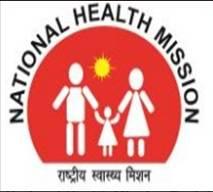NHM components
National Health Mission
The National Health Mission (NHM) envisages achievement of universal access to equitable, affordable & quality health care services that are accountable and responsive to people's needs.
The National Health Mission seeks to ensure the achievement of the following indicators.
 Reduce Maternal Mortality Rate (MMR) to 1/1000 live births
Reduce Maternal Mortality Rate (MMR) to 1/1000 live births- Reduce Infant Mortality Rate (IMR) to 25/1000 live births
- Reduce Total Fertility Rate (TFR) to 2.1
- Prevention and reduction of anemia in women aged 15–49 years
- Prevent and reduce mortality & morbidity from communicable, non-communicable; injuries and emerging diseases
- Reduce household out-of-pocket expenditure on total health care expenditure
- Reduce annual incidence and mortality from Tuberculosis by half
- Reduce prevalence of Leprosy to <1/10000 population and incidence to zero in all districts
- Annual Malaria Incidence to be <1/1000
- Less than 1 per cent microfilaria prevalence in all districts
- Kala-azar Elimination by 2015, <1 case per 10000 population in all blocks
Components of National Health Mission
The National Health Mission (NHM) encompasses its two Sub-Missions, the National Rural Health Mission (NRHM) and the National Urban Health Mission (NUHM).
NHM has six financing components:
- NRHM-RCH Flexipool
- NUHM Flexipool
- Flexible pool for Communicable disease
- Flexible pool for Non communicable disease including Injury and Trauma
- Infrastructure Maintenance and
- Family Welfare Central Sector component
The main programmatic components include
- Health System Strengthening in rural and urban areas
- Reproductive-Maternal- Neonatal-Child and Adolescent Health (RMNCH+A)
- Communicable and Non-Communicable Diseases.
Within the broad national parameters and priorities, states would have the flexibility to plan and implement state specific action plans. The state PIP would spell out the key strategies, activities undertaken, budgetary requirements and key health outputs and outcomes. The State PIPs would be an aggregate of the district/city health action plans, and include activities to be carried out at the state level. The state PIP will also include all the individual district/city plans. This has several advantages: one, it will strengthen local planning at the district/city level, two, it would ensure approval of adequate resources for high priority district action plans, and three, enable communication of approvals to the districts at the same time as to the state.
Source : National Health Mission
Related resources
Last Modified : 2/21/2020
This topic provides information related to steps t...
This topic provides about *99# Service- Innovative...
List of programmes related to communicable and non...
Ministry of Statistics & Programme Implementation ...
